EthZurich
Latest

Watch super slow-mo video from a camera with human-like vision
Conventional video cameras that capture scenes frame by frame have little in common with our eyes, which see the world continuously. A new type of device called an "event camera" works in much the same way, capturing movement as a constant stream of information. Now, scientists from Eth Zurich are showing the true potential of the sensors by capturing super slow-motion video at up to 5,400 frames per second. The research could lead to inexpensive high-speed cameras and much more accurate machine vision.

These robotic 'trees' can turn CO2 into concrete
Climate change is killing our planet. The excess production of carbon dioxide and other greenhouse gasses are filling the atmosphere and warming the Earth faster than natural processes can effectively negate them. Since 1951, the surface temperature has risen by 0.8 degrees C, with no sign of slowing. So now it's time for humans to step in and rectify the problem they created -- by using technology to suck excess CO2 straight from the air.

DroNet's neural network teaches UAVs to navigate city streets
Scientists from ETH Zurich are training drones how to navigate city streets by having them study things that already know how: cars and bicycles. The software being used is called DroNet, and it's a convolutional neural network. Meaning, it learns to fly and navigate by flying and navigating. The scientists collected their own training data by strapping GoPros to cars and bikes, and rode around Zurich in addition to tapping publicly available videos on Github. So far, the drones have learned enough to not cross into oncoming traffic and to avoid obstacles like traffic pylons and pedestrians.
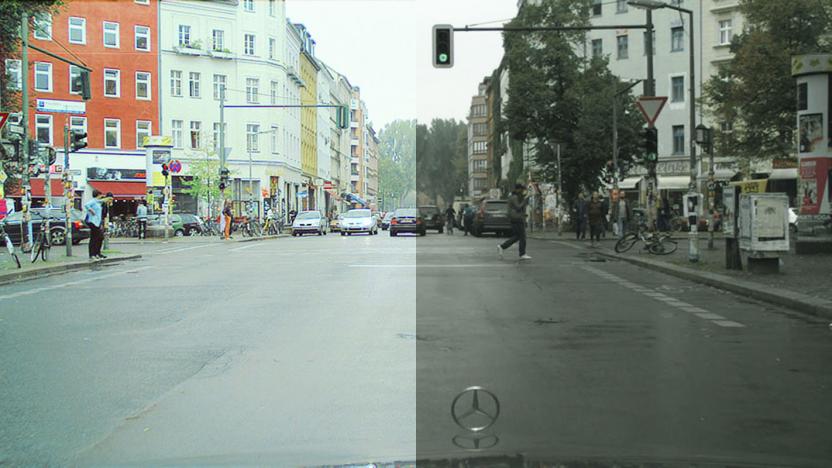
Neural network gives your phone 'DSLR-quality' photos
You can buy a Pixel phone if you want AI to enhance your photos every time you press the shutter button, and services like Google Photos use AI for minor fixes and clever effects. But what if you wish your photos looked like they were taken with a much better camera? Scientists might have an answer. They've developed a neural network system that's focused solely on giving your photos a "DSLR-quality" look. It's not flawless, but its novel approach points to a future where your phone knows what photos should look like and tweaks shots to match.

World's quickest laser pulse can track electrons in slow motion
The race to produce ever-faster laser pulses has set a new record, and it could lead to breakthroughs in our understanding of atom-level physics. A team at ETH Zurich has shortened an X-ray pulse to just 43 attoseconds (10-18 seconds), which is quick enough that you can observe electrons moving in slow motion. That, in turn, makes it realistic to study extremely fast processes, such as the formation of chemical bonds or the creation of electricity in solar cells.
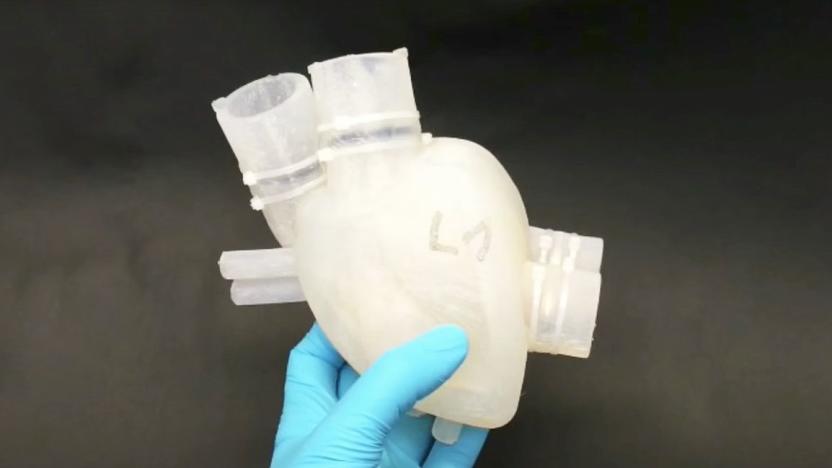
3D-printed silicone heart beats like the real thing
Advanced 3D printing and manufacturing techniques that can produce soft machines could save a lot of lives in the future. They could be used to make not just soft robots for search and rescue, but also temporary organs for people on the transplant waiting list, like the artificial heart created and tested by a team of researchers from ETH Zurich. The researchers have developed a silicone heart that beats like the real organ does using a 3D-printing, lost-wax casting technique.
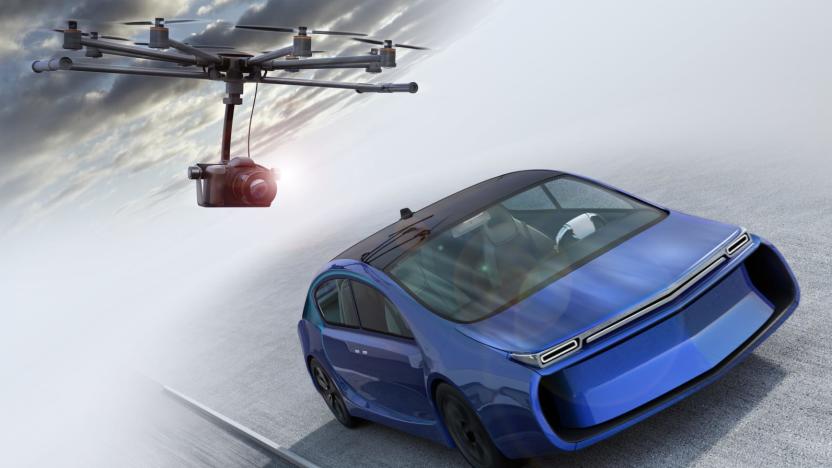
MIT's camera drones are smart enough to get the perfect shot
Over the last few years we've seen more camera drones than we can count, but getting the best footage out of them will take something extra. While many big budget productions are already using drone cameras, a system developed by MIT and ETH Zurich researchers goes beyond mere Steadicam or even subject-tracking, by allowing the director to define exactly how a shot is framed.

AI learns to recognize exotic states of matter
It's difficult for humans to identify phase transitions, or exotic states of matter that come about through unusual transitions (say, a material becoming a superconductor). They might not have to do all the hard work going forward, however. Two sets of researchers have shown that you can teach neural networks to recognize those states and the nature of the transitions themselves. Similar to what you see with other AI-based recognition systems, the networks were trained on images -- in this case, particle collections -- to the point where they could detect phase transitions on their own. They're both very accurate (within 0.3 percent for the temperature of one transition) and only need to see a few hundred atoms to identify what they're looking at.
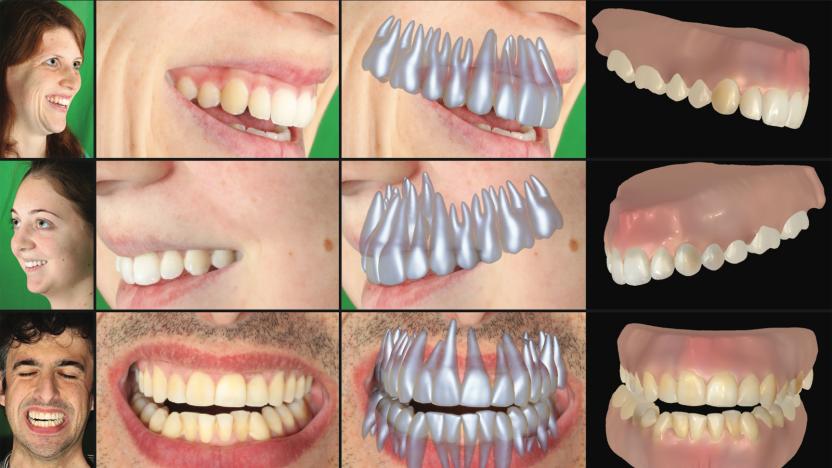
Disney can digitally recreate your teeth
Digital models of humans can be uncannily accurate these days, but there's at least one area where they fall short: teeth. Unless you're willing to scan the inside of someone's mouth, you aren't going to get a very faithful representation of someone's pearly whites. Disney Research and ETH Zurich, however, have a far easier solution. They've just developed a technique to digitally recreate teeth beyond the gum line using little more than source data and everyday imagery. The team used 86 3D scans to create a model for an "average" set of teeth, and wrote an algorithm that adapts that model based on what it sees in the contours of teeth in photos and videos.

The Engadget Podcast Ep 11: Everybody Hurts
Managing editor Dana Wollman and senior editor Mona Lalwani join host Terrence O'Brien to talk Macbook rumors, Amazon ISP ambitions and Julian Assange. Then they'll talk about all the work that went into Engadget's five part series covering the world's first cyborg games, Superhumans and look at VR's ability generate empathy.

The first Cybathlon pushed the limits of bionic technology
Andre van Rüschen slowly climbed a five-step ramp at the end of his race. With a black processor strapped to his back and leg supports on either side of his lower limbs, he stayed focused on the body-machine coordination that was keeping him upright. He had walked over a wooden slope, criss-crossed bright yellow bars and tried to step on gray discs that were placed irregularly on the floor. Now, standing atop the last obstacle in the exoskeleton race, he took a moment to pause and look up at his opponent on the adjacent track. They were both on the ramp, going head-to-head at the world's first Cybathlon, a sporting competition designed for people with severe disabilities. The crowd inside the Swiss Arena in Zürich cheered them on. Van Rüschen, the German pilot who was using a ReWalk exoskeleton, quickly regained his focus and prepared to walk down the next five steps to complete the race. He hit a button on the remote around his wrist to change the settings from "walk" to "climb" and quickly adjusted his upper body to balance his weight on the crutches in his hands. With his competitor, Mark Daniel, right on his heels, he leaned forward to pick up the pace.
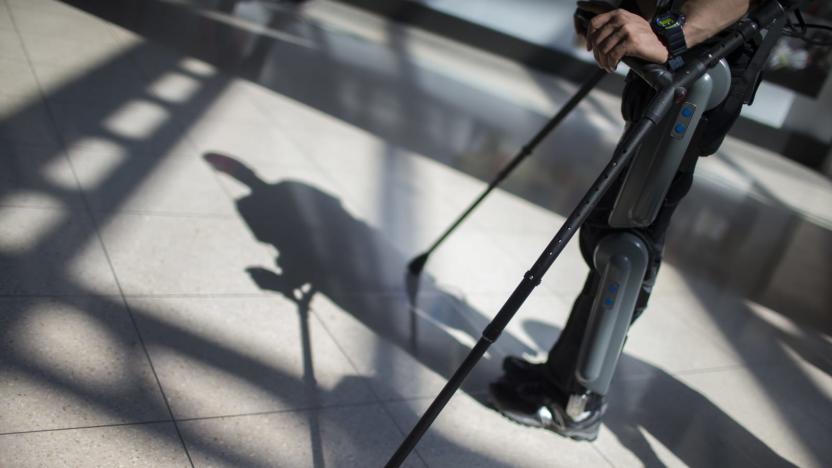
Pushing the limits of exoskeleton technology at the Cybathlon
Andre van Rüschen has no memory of the day he lost all feeling in his legs. After a car accident in Germany, he had a spinal cord injury that left him paralyzed from the waist down. When he woke up from a coma in a hospital in Hamburg, the doctors told him he would never walk again. But now, thirteen years later, van Rüschen is back on his feet, and he is training to compete as a pilot in the Powered Exoskeleton race at the Cybathlon in Zurich this month.

Powered prosthetics turn mundane tasks into monumental feats
Lukas Kalemba was walking home with some friends after a night of partying and drinking in Dortmund, Germany, in 2003. While crossing a bridge along the way, he stopped to rest but lost his balance and fell over. In an attempt to break his fall, he instinctively reached out and grabbed a wire that stretched across. It kept him from falling 20 feet to the ground immediately but the wire sent a high-voltage current through the left side of his body, causing irreparable damage to his leg. Kalemba became an above-the-knee amputee when he was 19 years old. He was in an induced coma for three weeks until the doctors brought the pain down to a manageable level. "The first time I noticed it was in the hospital when I stood up at night to go to the toilet," he says. "I wanted to stand on my left foot [but] I crashed on the floor."

A bike accident left him paralyzed; electricity let him ride again
During a prerun of the Baja 1000, one of the world's most treacherous off-road races, Michael McClellan rode his dirt bike out to the front. He traversed the rough terrain of Mexico's northwest peninsula, eventually coming up hard on a washed-up break in the road. In the moment, McClellan decided to take the jump. The front tire made it over the gaping hole, but the back end came up short. The force of the impact crushed his bike and burst the T11 vertebra in his spinal cord, leaving his lower body paralyzed before he even hit the ground.

Human and machine become one for birth of the Cybathlon
On a bright Tuesday morning, about six miles north of Zürich, an ice-hockey team skates onto a rink for a practice round. Each player, dressed in a white jersey and matching protective gear, slides a puck in the direction of a heavily padded goaltender. The little discs swish across the floor in a black blur before smashing against the peripheral walls in loud thuds that echo throughout the Swiss Arena. The arena is home to the Kloten Flyers, Switzerland's leading hockey team, who regularly play to a packed house. But in less than a month, the icy floor inside the country's largest indoor venue will transform into a race course for a different kind of sporting event. On Oct. 8th, the stadium will open its doors to the world's first Cybathlon, a multidiscipline competition for people with disabilities who use bionic technologies to augment their bodies.

ICYMI: Some robots independently sing, others help babies
try{document.getElementById("aol-cms-player-1").style.display="none";}catch(e){}Today on In Case You Missed It: A new neural network robot in Japan can independently sing and move whenever it wants to. Researchers developed a robotic onesie for babies who may have cerebral palsy that helps make motor skills connections in the brain, giving them a boost in learning to crawl and walk. And Disney and ETH Zurich teamed up to engineer a new way to create 3D prints by thermoforming them one at a time. Finally make sure you watch the video of a gold-plated record playing all the way up to space and back down to earth, on a space-proof turntable. As always, please share any interesting tech or science videos you find by using the #ICYMI hashtag on Twitter for @mskerryd.

Super-fast magnetic motor keeps tiny satellites on track
Satellites often rely on reaction wheels, or constantly spinning flywheels, to tweak their attitudes without using precious fuel. However, they tend to be very delicate -- since they use ball bearings, they spin relatively slowly (under 6,000RPM), take up a lot of space, need tightly controlled environments and aren't very precise. Thankfully, researchers at Celeroton have a better way. They've created a magnetically levitated motor that achieves the effect of a regular reaction wheel with virtually none of the drawbacks. Since its rotor floats in a magnetic field, it can spin much faster (up to 150,000RPM) without wearing out, creating vibrations or requiring a special, lubricated environment. And given that it produces the same angular momentum as a much larger reaction wheel, it's perfect for CubeSats and any other tiny satellite where internal space is at a premium.
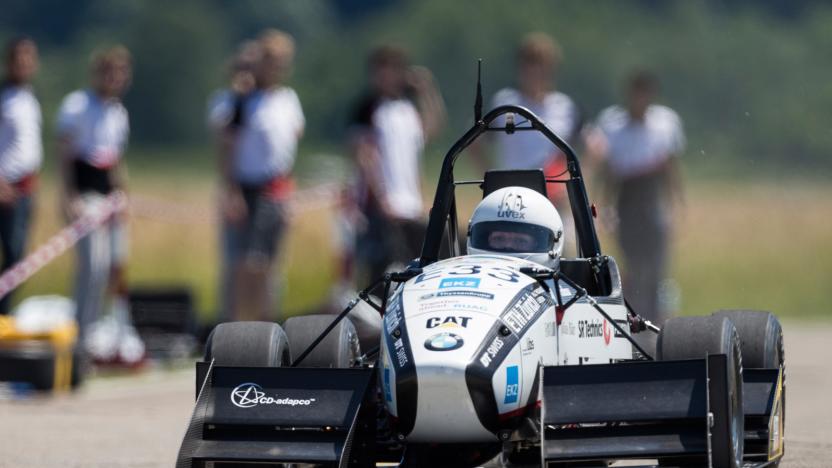
Electric race car sets an acceleration world record
Electric cars are quick off the mark as a matter of course, since they're both very efficient with energy and always operate at peak torque. You probably haven't seen a road-going machine this fast, though. Swiss students have shattered the world record for EV acceleration with an experimental race car, Grimsel, that reached 62MPH in 1.513 seconds -- over two tenths of a second sooner than the previous best. For context, the 1,480HP Bugatti Chiron hits that speed somewhere under 2.5 seconds.

Six machines that build a better world
By Cat DiStasio When it comes to construction, technology can go a long way toward making building projects faster, more economical and safer. Robots that can alleviate back-breaking manual labor and cut down on injuries are a welcome addition to work sites, and they can do everything from building a brick home to constructing a steel bridge. Other cool machines have been engineered to help those in need, like a 40-foot-tall 3D printer that makes mud houses for developing nations. With so many complicated tasks in the construction world, it's amazing to think about how machines can help us do them better, more powerful and often more eco friendly.
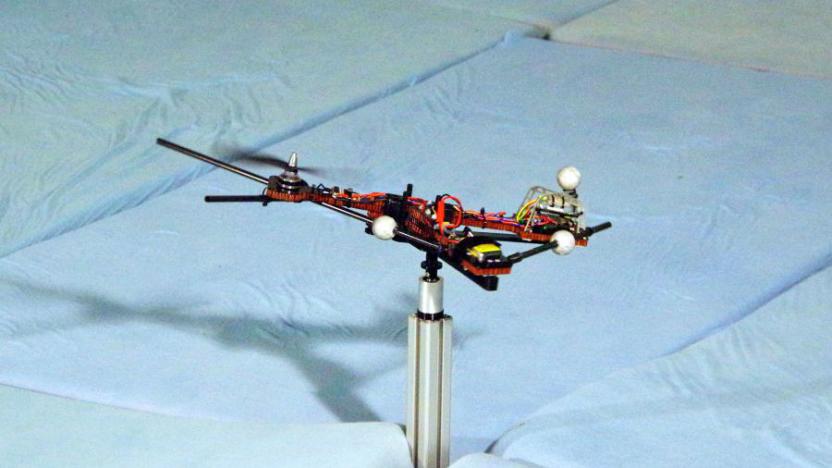
One-rotor drone is equal parts awkward-looking and adorable
Who says that drones need to be hugely complicated, multi-rotor jobs? Regardless, they never told that to the folks behind the Monospinner, a one-rotor drone that's been entered into the ETH Zurich Flying Machine Arena. Unlike, say, a quadrocopter, this one can't fly by itself and needs some help getting into the air. It hits an "unconventional equilibrium" in part by counterbalancing the rotor spins with the torque of the motor itself. The resulting movement almost reminds me a little of Zui Quan (drunk-style martial arts): awkard-looking on the surface, but really impressive in practice. Take a peek for yourself in the video below and you'll see what I mean.









